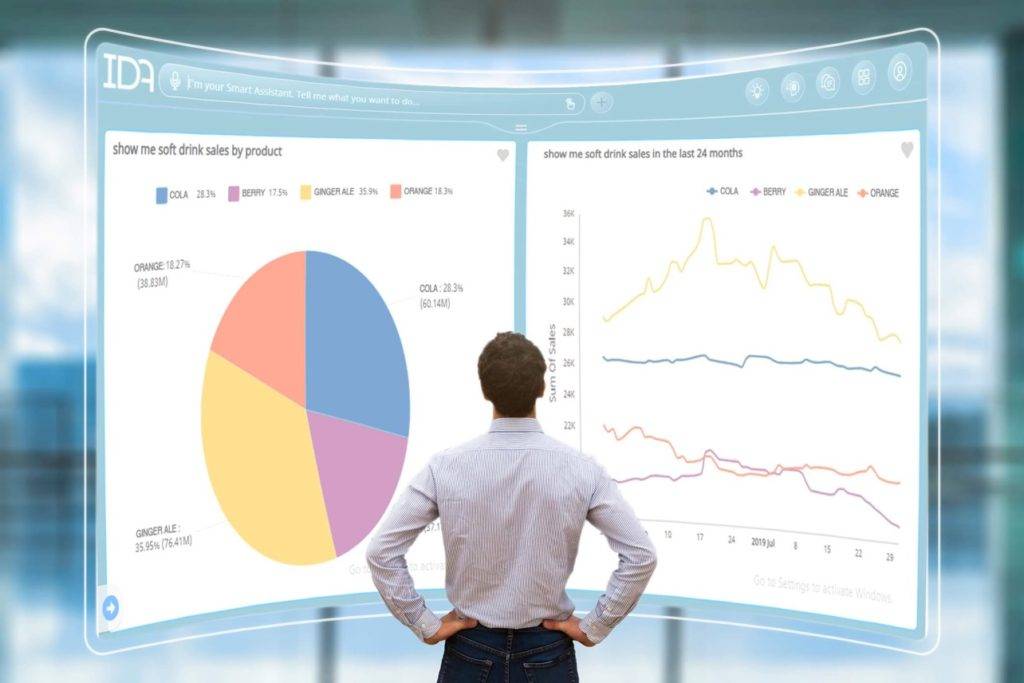Introduction
Financial data analytics is proven to improve decision-making and open new windows of opportunities. In a broad sense, companies can apply financial data analytics to achieve performance goals and achieve long-term objectives. The truth is that financial planning through data analytics is a dynamic approach to build profit and loss statements.
Moreover, financial data analytics also allows companies to accelerate and streamline monthly forecasting and budgeting efforts. Modern-day financial solutions can now address different roles of a finance team and assign data accessibility for specific roles.
Financial data analytics has made it possible for companies to meet new demands and collect financial information that would support other aspects of the company. When it comes to financial planning from multiple sources, data analytics can centralize the operations and allow organizations to create a database that would lead to accurate and consistent decision-making.
Data Analytics in Financial Statements
Data analytics continues to be effective when it comes to evaluating the historical data of a company and improving its understanding of future and current financial health. In line with the financial statements, data analytics helps businesses track down financial performance as well as purchasing and sales data.
This, in turn, renders the full access of financial health to the company. For most organizations, however, stored data in multiple sources creates more challenges than they can handle. And this is where data analytics also comes to the rescue.
Furthermore, data analytics allows companies to anticipate their future financial performance. Companies can use data analytics to review historical data along with financial statements to predict potential variations and changes over time.
Unlike traditional static accounting reports, data analytics provides dynamic analysis and allows users to follow a specific train of thought within the data. The personalized dashboard showcases a detailed information summary to make sense of underlying transactions and get answers to specific questions.

The Transformative Nature of Data Analytics in Financial Planning
The fact of the matter is that data analytics has managed to transform financial planning and subsequent analysis. Unlike traditional style financial planning, data analytics involves using specific tools to find patterns across historical financial statements in an instant.
Since every company wants to cut back on its expenses and generate more revenue, financial planning can make all the difference. With data analytics, companies can automate a lot of parameters within their financial statements and fill out gaps to drive organizational success.
Today, CFOs are usually under a lot of pressure to implement flawless financial planning through data analytics processes. It’s all about “how” you discover and “use” insights to augment data and pave the way for positive future results for the company.
In fact, even finance departments now use data analytics to accelerate processes and garner or review data in real-time. One of the perks of using data analytics for financial planning is to cut out manual tasks and improve business agility in the process.
Importance of Financial Planning and Data Analytics
When it comes to modern-day financial planning and data analytics, you have to connect the dots about how it conveniently and easily addresses complicated issues. And despite the scope, severity, and size of the issue, data analytics makes financial planning optimizes the entire process.
Once you under the extent of possibilities of data analytics and how it can work with financial planning, it can change the way organizations have been planning for decades. And that’s because data analytics invites new variables and propels the interest of the company to balance the risk business carries.
Financial planning that stems from data analytics makes it easier for companies to answer key questions like “where we are right now” “where we plan to go,” and “how we want to move forward.”
With data analytics, companies don’t have to jump into the rabbit of endless manual variables and exhaust all options until the model is perfect. Instead, it can use data analytics to categorize short and long-term objectives in line with the business competitors, business model, and changing market demands.
Professionals are aware of the vital role of data analytics in advanced and automated financial planning. Business decisions makers expect more advancement in financial data analytics to strategically optimize performance as well as resource utilization.

Benefits of Financial Planning and Data Analysis
In recent years, there has been a growing role in financial planning and data analysis. And why wouldn’t it be? Data analytics improves decision-making and competitive drive that leads to organizational growth.
Financial data analytics is also ideal to mitigate risks and prepare prompt reports from current data. Not to mention, financial planning through data analytics creates more thorough and accurate insights that allow business leaders to make growth-driven decisions and establish clear enterprise goals for years to come.
Final Thoughts
In this day and age, using a robust data analytics tool for financial planning is integral. Opt for a dedicated data analytics solution that offers a user-friendly experience, straightforward analysis, and modular and personalized dashboards.
Through data analytics, you can set secure and dedicated permissions and access control for your division managers, financial team, purchasing team, and brand managers. Besides, the ability to create and share dedicated financial reports allows business leaders to make instant responses under different conditions.
The hallmark aspect of data analytics is that it cuts out the traditional elements of financial planning and reporting. The swift access to data without geographical and time restraints gets rid of more issues and creates more revenue opportunities.
REFERENCES:
- https://www.information-age.com/how-smarter-data-analysis-can-transform-financial-planning-123496204/#:~:text=At%20its%20core%2C%20financial%20planning,%E2%80%9Cwhat%2Dif%E2%80%9D%20simulations.
- https://www.ibm.com/topics/financial-planning-analysis
- https://www.gartner.com/en/finance/role/financial-planning-analysis
- https://www.investopedia.com/articles/professionals/120315/career-advice-financial-analyst-vsdata-analyst.asp
Also visit:
- What is Risk Analytics? | Completely
- Predictive Modeling: What are the Mechanics and Benefits of Using?
- How Analytics is Transforming the Logistics and Transportation Industry
- Data Analytics: Top Customer Service Trends You Need to Know

